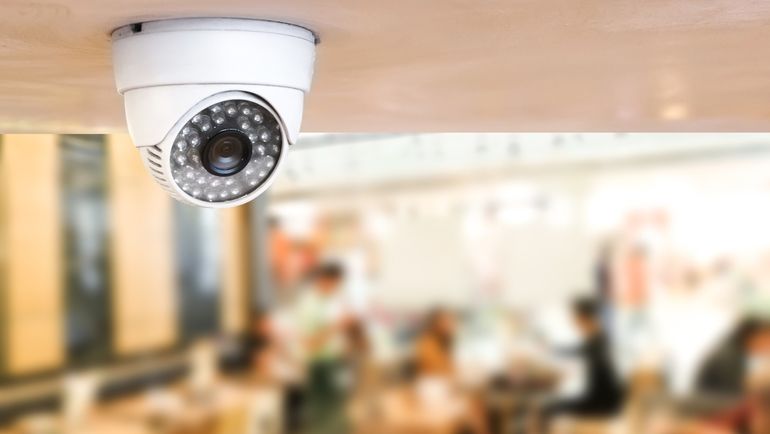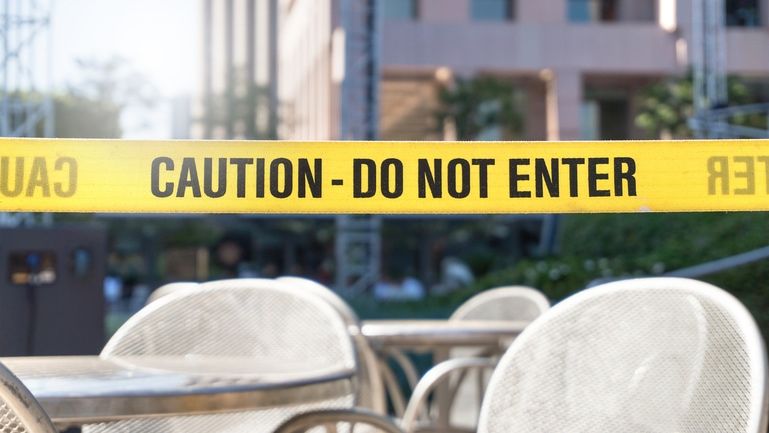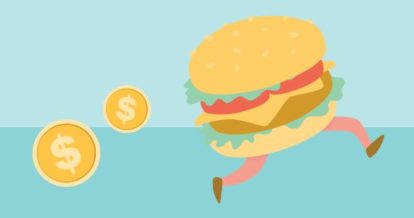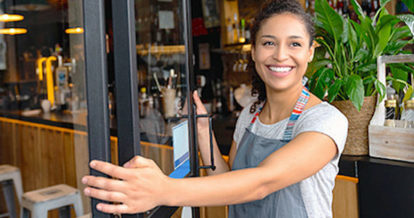Every now and then, you hear a dramatic story about a group of people ordering copious amounts of food at a restaurant and running away before settling the check. While dine and dash may seem like a made-for-TV problem, it’s pervasive throughout the restaurant industry.
Although it’s the most outrageous cases of theft that make the news, it’s the everyday, small-scale crimes that chip away at the financial health of a venue. Fortunately, there are simple measures you can take to prevent dine and dash at your venue.
In this article, you’ll learn:
- What dine and dash means
- What dine and dash could be costing your restaurant
- How to prevent dine and dash at your restaurant
- What to do (and not to do) if your restaurant is a victim of dine and dash
Restaurateurs already have enough to think about without having to be wary of patrons turning into criminals. When you implement our advice, dine and dash will be the least of your worries!
What Is Dine and Dashing?
Dine and dash is a type of restaurant theft that usually happens at full service restaurants. The practice of dine and dashing is when someone orders and consumes food or beverages at a restaurant or bar but leaves before paying, stealing their meal.

How Much Could Guests Who Don’t Pay Be Costing Your Restaurant?
As we mentioned, the news covers the crazy stories of people leaving quick without paying.
You hear about the group of 120 dine and dashers in Spain who literally conga danced away from a $2,000 check. There’s also the man in the news who went viral taking women out on dates at expensive restaurants and leaving before the check came – he’s now the face of dine and dashers on Google search!
The News Doesn’t Paint an Accurate Picture
While these stories are equal parts hilarious and terrifying, they don’t paint an accurate picture of how dine and dash impacts the foodservice industry.
These cases make the news because they are extraordinary. What doesn’t make the news are the small dine and dish cases that happen on a regular basis. One report says that one in 20 people dine and dash – that’s 5% of diners!
A Real-Life Example of Dashing Costs
To put that into perspective, let’s say that a restaurant generates $50,000 in revenue each month. If one in 20 patrons or parties dine and dashes, that’s a loss of $2,500 each month, or $30,000 each year. That’s money that could be spent on rent, staff, equipment, or marketing, to name a few areas.
9 Tips for Preventing Diner Theft at Your Restaurant
Fortunately, there are plenty of things you can do to keep that $30,000 in your pocket. Choose just one loss prevention technique and you’ll see benefits, or combine them all for maximum protection.
1. Focus on Reservations
Reservations help you run an organized house, but did you know they can also be a form of loss prevention?
When a person creates a reservation, you get their contact details on file. Knowing that they can be identified deters individuals with reservations from stealing food. Even if the guest gives a fake name, you can use the phone number or email address they provided to help law enforcement find them.

2. Install a Security System
A security system can help prevent someone from eating and leaving your premises without paying, and make it easier to find the culprit if somebody skips out on the bill.
Put surveillance cameras in all front of house locations at your venue, like the entrance, waiting area, seating area, or hallway in front of the restrooms. You can even install cameras at all exits and throughout your parking lot.
3. Use Signs to Deter Theft
If you can’t afford a security system, put up fake cameras or signs that tell guests that they are being filmed. Guests won’t know the difference between a real or fake camera – it should be enough to help deter anyone trying to pull a fast one one you!
4. Implement Tableside Payments
What’s the number one reason why diners dash without paying? Because the check takes too long to come out. In fact, one in four restaurant customers say they would dine and leave without paying if they had to wait half an hour for the check!
When you implement tableside payments at your restaurant, you’re able to ring guests up immediately, instead of going back to the POS to generate a check, waiting in line for other servers to do the same, and then bringing the credit card back to the payment processor. You can accept cash payments and swipe credit cards using an iPad instead of a cash register or standalone credit card reader.
When payments can be processed as soon as the check is requested, you greatly reduce your risk of dine and dash.
5. Switch to Counter Service
Another restaurant theft prevention method is to switch your service model to one in which patrons pay upfront instead of at the end of their meal. With counter service, guests don’t receive their food before payment. This can also be a good way to check for credit card fraud early on.
However, most customers don’t expect to tip their servers at counter service restaurants, so you’ll have to look into adjusting how you pay your servers.

6. Spend More Time with Customers
Sneaking out without paying happens when guests are alone, not while servers are present. When servers spend more time with patrons, the odds of someone leaving without paying will decrease!
With tableside ordering, it becomes even easier for staff to spend more time with guests. This makes your guest experience better since servers aren’t having to dash off to input multiple orders and allows your staff to connect more with guests – hello tips!
7. Ask for a Credit Card to Start a Tab
Ask bar guests to give your bartenders a credit card to open a tab with. Keep cards behind the bar until your staff is asked to close out their bill. At that point, the bartender can swipe the credit cards, so non-payment isn’t an issue.
If patrons don’t want to keep a tab open, present them with their check immediately. If they eat and run out, at least it’s for one or two drinks rather than several, as would be the case for an open tab.
8. Have a Host at the Front Door at All Times
Just like food theft can be prevented when servers hover near guests while seated, it can also be prevented when a host stands at the front entrance of the restaurant.
Hosts can monitor a venue’s table management tool. They can see who’s asked for the check… and who is attempting to leave without paying it.
Dashers are more common in outdoor spaces because the crime is easier to commit when you don’t have to walk past gatekeepers or exit through a door. If you have an outdoor space, keep it enclosed or put it in the back of your restaurant so that diners still have to exit through the front door.
9. Give DIners One Way Out
Giving diners one way in and one way out – including patio access when the weather is nice – can make it even more difficult for dine-and-dashers to sneak out. If it seems like someone is leaving without paying, it’s simpler to prevent them from leaving if there is only one path out of the building.
Warning: Obey local fire codes by creating emergency exits where appropriate to keep your visitors safe!

What to Do – and What Not to Do – If You’re a Victim of Dashers
Even with all the precautions taken, guests might still get away with a dash.
Here are some dos and don’ts for how to handle it and minimize its impact.
What to Do If You’re a Victim of Dashers
If your business falls victim to a case of a dash, the first thing you should do is contact the police.
Theft is a crime and should be taken seriously. Even if the value of the goods and services stolen from your restaurant was relatively inconsequential, the total value of the goods stolen in your area by that same perpetrator could add up to a lot. You could help the police catch a serial dine and dasher!
Share as Much Information as You Can
To help the police with their investigation, it’s important to gather as much personal information as possible about the perpetrator. Review camera footage, get a personal contact phone number, email, or address from a reservation, or ask your staff to describe the person in question.
Next, reach out to restaurateurs in your community. Describe the perpetrator to them and warn them to look out for this person. You don’t want fellow businesses to fall victim to the same person.
What NOT to Do If You’re a Victim of Dashers
Here are several things you should not do if you’ve been a victim of dine and dash.
First, do not bring public attention to the incident. If you advertise that people got away with restaurant theft at your business, you’re letting other criminals know they might be able to get away with the same thing. When you tell the public about dine and dashers, you increase your chances of becoming a target.
Second, while you shouldn’t tell the public about the theft that occurred, not telling your team about what happened is a mistake. Always be as transparent as possible about the incident to your staff. Explain what happened and what could have been done to prevent it.
Your staff members need to work as a team to prevent future thefts. Staff negligence may be to blame for dine and dash on a rare occasion, but most of the time, an incidence of stealing is no fault of the server.
Lastly, in most places it’s illegal to make servers pay for the losses inflicted by a dine and dash incident at a table that they were serving. Check your local laws before taking any action.
Dine and dash is an expensive problem that is pervasive throughout the restaurant industry. Fortunately, there are measures that you can take to decrease the chances of falling victim to it. When you combine restaurant technology with security-focused training, your team can maximize loss prevention in your business.
Download our free inventory template
Sign up for our free weekly TouchBistro Newsletter







